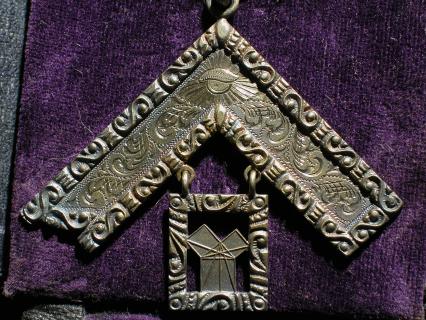
a2 + b2 = c2
Of course it has a direct geometric formulation.
Click on & move the node to change the shape of the triangle.
For many of us, this is the first result in geometry that does not seem to be self-evident. This has apparently been a common experience throughout history, and proofs of this result, of varying rigour, have appeared early in several civilizations. We present a selection of proofs, dividing roughly into three types, depending on what geometrical transformations are involved.
Proofs that use shears (including Euclid's). These work because shears of a figure preserve its area. Some of these proofs use rotations, which are also area-preserving.
Proofs that use translations. These dissect the large square into pieces which one can rearrange to form the smaller squares. Some of these are among the oldest proofs known.
Proofs that use similarity. These are in some ways the simplest. They rely on the concept of ratio, which although intuitively clear, in a rigourous form has to deal with the problem of incommensurable quantities (like the sides and the diagonal of a square). For this reason they are not as elementary as the others.
Thomas L. Heath, The thirteen books of Euclid's Elements in three volumes, Dover, 1956. The Elements of Euclid are available on the Internet as are all of Heath's comments.
Elisha Loomis, The Pythagorean Proposition, National Council of Teachers of Mathematics, 1968. This eccentric book was first compiled in 1907, first published in 1927 (at a price of $2.00!), and reissued in this edition. It contains 365 more or less distinct proofs of Pythagoras' Theorem. The total effect is perhaps a bit overwhelming, and the quality of the figures is very poor, but nonetheless there are a few gems distributed throughout.
Lubo Cipin has scanned the original 1927 edition from a copy at the University of Toronto, and made his scans available to us: Loomis' 1927 edition (about 25 MB)
From the life of Thomas Hobbes in John Aubrey's Brief lives, about 1694.
From pp. 9-11 in the opening autobiographical sketch of Albert Einstein: Philosopher-Scientist, edited by Paul Arthur Schilpp, published in 1951.
"You mentioned isosceles triangles. Will it do if I prove Pythagoras for you?"
"Jesus," he said. "The square on the hypotenuse. I'll bet you can't."
I did it with a bayonet, on the earth beside my pit - which may have been how Pythagoras himself did it originally, for all I know. I went wrong once, having forgotten where to drop the perpendicular, but in the end there it was ... He followed it so intently that I felt slightly worried; after all, it's hardly normal to be utterly absorbed in triangles and circles when the surrounding night may be stiff with Japanese.
From p. 150 of Quartered safe out here by George MacDonald Fraser, (that's right, the author of the Flashman books) an account of his experiences in the Burmese fighting in 1944-45 against the Japanese. Published by Harper-Collins in 1992.
From p. 106 of the Penguin edition of To understand is to invent by Jean Piaget.
Grace, sir.
And?
Beauty, sir.
And?
Elegance, sir.
Euclid is compete in himself and divine in application. Do you understand that, boys?
We do, sir.
I doubt it boys, I doubt it. To love Euclid is to be alone in this world.
He opens his eyes and sighs and you can see the eyes are a little bleary.
The opening to Chapter VI of Angelas's Ashes by Frank McCourt, Touchstone, 1996.
From Conan Doyle by Hesketh Pearson, a biography of the creator of the Sherlock Holmes. Although irrelevant to mathematics, there are a few other quotable lines in the book: To any but the simplest and most easily gulled individual the average professor is about as far from one's conception of a superhuman or an electric force as it is possible for a man to be.
Doyle's attitude towards mathematics was certainly embodied in unusual form: ... Professor Moriarty ... a man of good birth and excellent education, endowed by Nature with a phenomenal mathematical faculty ... had hereditary tendencies of the most diabolical kind (from `The Final Problem' in the Memoirs of Sherlock Holmes).
Mathematics had a terrible time of it among the literati of the late nineteenth century. Mahaffy had suggested in his book that intelligent questions addressed to a pure mathematician would elicit many curious facts that would pleasantly beguile the time. Wilde drew the line at this: `Here, in the interest of Society, we feel bound to enter a formal protest. Nobody, even in the provinces, should ever be allowed to ask an intelligent question about pure mathematics across a dinner table.' This from another biography by Hesketh Pearson, The life of Oscar Wilde, pp. 129-30 of the fourth edition, published by Methuen in 1949.

The 47th proposition of Euclid's first book of the "Elements", also known as "The Pythagorean Theorem", stands as one of Masonry's premier symbols, though it is little discussed and less understood today. That fact is made the more unfortunate, since the 47th proposition may well be the principal symbol and truth upon which Freemasonry is based.
From Circumambulation and Euclid's 47th Proposition, by Reid McInvale, at http://www.io.com/~janebm/summa.html.